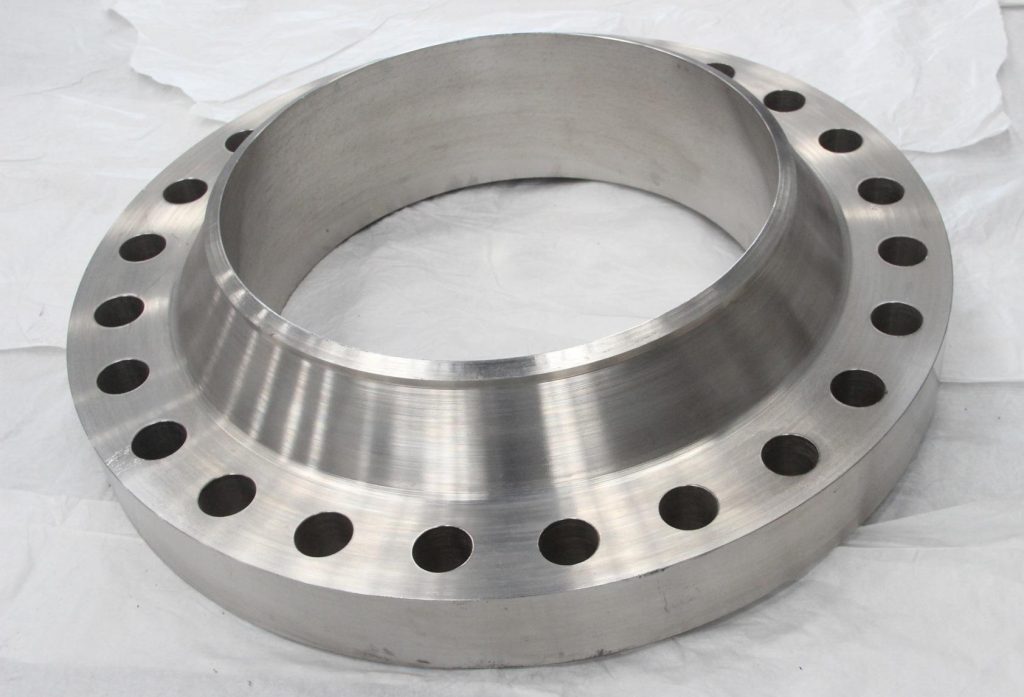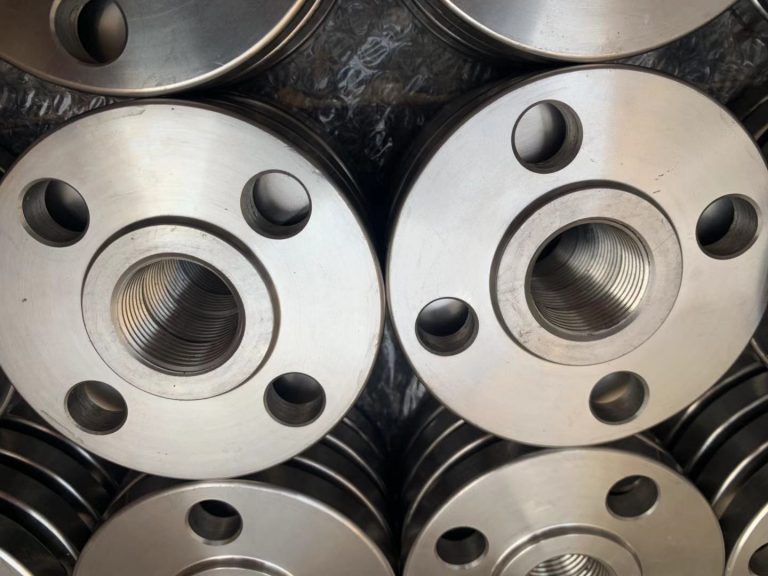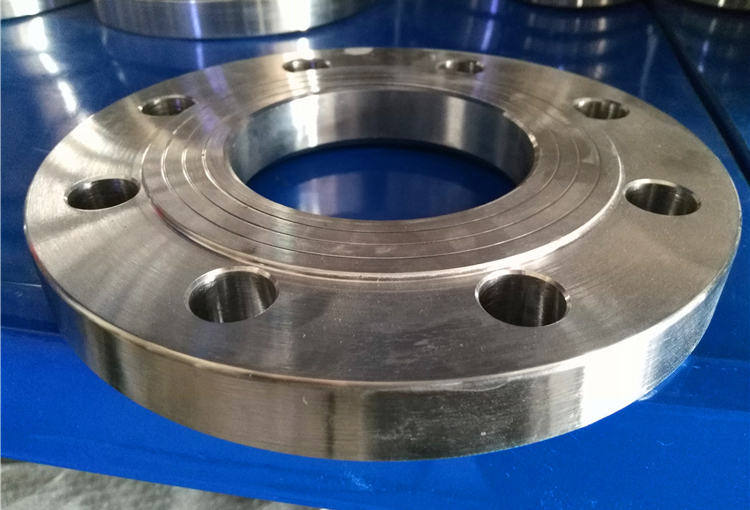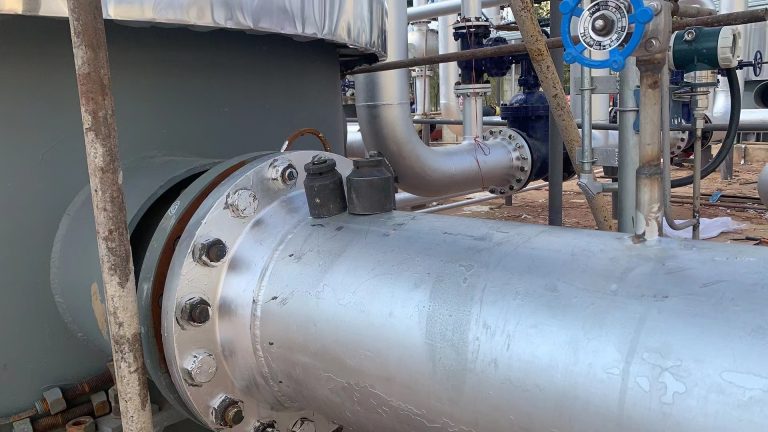Flanges play a crucial role in modern industrial sectors. Whether it is the oil industry, chemical plants, shipbuilding, pharmaceuticals, power generation, or paper and pulp industry, flanges are essential for connecting different sections of piping systems. Through this blog, we aim to introduce what is a Flange in Piping.

What is a Flange?
A flange is a mechanical connector used in piping systems to join two pipes or components together. It is an essential component that allows for easy assembly, disassembly, and maintenance of the piping system.
The purpose of flanges in piping systems is to provide a secure and leak-proof connection. Flanges offer several benefits, including:
- Enhanced Strength: Flanges increase the strength and stability of the piping system, allowing it to withstand high pressure and temperature conditions.
- Easy Access: Flanges provide a convenient access point for inspection, maintenance, and cleaning of the pipeline.
- Flexibility: Flanges allow for easy disconnection and reconnection of pipes, making it simpler to modify or expand the piping system.
- Alignment and Support: Flanges ensure proper alignment between pipes and offer additional support to prevent sagging or misalignment.
Flanges consist of several key features and components, including:
- Flange Face: The flat or raised surface of the flange that provides a contact area for the gasket.
- Bolt Holes: Holes on the flange where bolts are inserted to secure the joint.
- Gasket Seat: The groove or surface area on the flange where the gasket is placed to create a seal.
- Raised Face (RF): A raised area around the flange face that helps in centering the gasket and providing additional sealing surface.
- Flange Material: Flanges are typically made of materials such as carbon steel, stainless steel, or alloy steel, depending on the application and required strength.
Overall, flanges are vital components in piping systems, ensuring a reliable and secure connection between pipes and supporting the overall integrity of the system.
Types of Flanges
There are several types of flanges commonly used in the industry, each with its specific design and application. Let’s discuss some of the most commonly used types:
- Weld Neck Flanges: This type of flange has a long neck and is welded to the pipe. It offers excellent strength and is suitable for high-pressure and high-temperature applications. The weld neck flange provides a smooth transition between the pipe and the flange.
- Slip-On Flanges: Slip-on flanges have a slightly larger diameter than the pipe, allowing it to slide over the pipe. They are then fillet-welded to provide a strong and secure connection. Slip-on flanges are easy to install and are commonly used in low-pressure and non-critical applications.
- Socket Weld Flanges: Socket weld flanges have a socket-like extension that is welded to the pipe. They provide good strength and are used in small-bore piping systems. Socket weld flanges are suitable for high-pressure applications and offer easy alignment during installation.
- Blind Flanges: Blind flanges are solid discs used to close the end of a pipe or vessel. They are commonly used to seal off sections of piping systems for maintenance or inspection purposes. Blind flanges also provide a convenient access point for future modifications to the system.
- Lap Joint Flanges: Lap joint flanges consist of two components – a carbon steel stub end and a backing flange. The stub end is welded to the pipe, and the backing flange slides over the stub end. It allows for rotational alignment during installation and is often used in systems requiring frequent dismantling.
- Threaded Flanges: Threaded flanges have internal threads that match the external threads of the pipe. This allows for a secure connection without the need for welding. Threaded flanges are used in low-pressure and non-critical applications, primarily in small-sized pipes.
Applications of Flanges
Flanges have a wide range of applications across diverse industries. Here are some of the key industries where flanges are commonly utilized:
- Oil and Gas: Flanges are extensively used in the oil and gas industry for connecting pipes, valves, and equipment in various processing facilities, including refineries, pipelines, and offshore platforms. They are crucial for ensuring safe and leak-free operations in the transportation and processing of oil and gas.
- Chemical: In chemical processing plants, flanges are employed to join pipes, valves, pumps, and reactors. The chemical industry often deals with corrosive and hazardous materials, and flanges help in creating secure connections that can withstand aggressive chemicals and high temperatures.
- Shipbuilding: Flanges play a significant role in shipbuilding, enabling the connection of pipes, valves, and other equipment in various systems on board ships, such as fuel, cooling, and ballast systems. Flanges used in shipbuilding must be durable, resistant to corrosion, and capable of withstanding the demanding marine environment.
- Pharmaceutical: The pharmaceutical industry requires strict hygiene standards and cleanability. Flanges are used in pharmaceutical manufacturing facilities to connect pipes and equipment, facilitating the transfer of liquids, gases, and pharmaceutical products while maintaining sanitary conditions.
- Power Generation: Flanges are critical components in power plants, including thermal power plants, nuclear power plants, and renewable energy facilities. They are used in piping systems that carry steam, water, fuel, and other fluids necessary for power generation. Flanges ensure leak-tight connections and support efficient plant operation.
- Paper and Pulp: Flanges find applications in the paper and pulp industry, particularly in systems for transporting chemicals, water, and steam. They are used in various processes, such as pulping, bleaching, and paper drying, where reliable connections are needed to maintain productivity and prevent leaks.
Navigating Flange Sizing: Industry Standards and Their Application
Flange sizing is a critical aspect of designing and constructing piping systems. Properly sized flanges ensure the safe and efficient operation of the system, including the prevention of leaks, alignment issues, and structural integrity problems. Here’s a closer look at the importance of flange sizing and the industry standards commonly used:
Importance of Flange Sizing:
- Leak Prevention: Flange sizing plays a crucial role in establishing leak-free connections in piping systems. Correctly sized flanges help create a tight seal, preventing the escape of fluids and gases, which ensures the safety of personnel, protects the environment, and maintains the efficiency of the system.
- Structural Integrity: Flange sizing directly impacts the structural integrity of the piping system. Improperly sized flanges can result in excessive stress on the system, leading to failure, fatigue, and even catastrophic accidents. Proper sizing ensures that the flange can support the loads imposed on it without deformation or compromise.
- Alignment and Connection Ease: When the flange sizes are compatible, the alignment and installation of pipes become easier. Properly sized flanges allow for smooth connections and reduce the need for costly alterations or modifications during installation.
Industry Standards for Flanges:
- ASME B16.5: The American Society of Mechanical Engineers (ASME) B16.5 standard provides guidelines for flanges, flanged fittings, and flange gaskets in pipe systems. It covers dimensions, tolerances, materials, testing, and marking requirements. ASME B16.5 is widely used in the United States and has global recognition.
- EN 1092-1: The European Norm (EN) 1092-1 standard defines the dimensions and pressure-temperature ratings for flanges in Europe. It covers different types of flanges and provides specifications for material selection, gasket factors, and facing finishes.
- JIS B2220: The Japanese Industrial Standards (JIS) B2220 standard establishes the dimensions, materials, and pressure ratings for steel pipe flanges used in Japan. It provides guidelines for various flange types and includes specifications for facing finishes, marking, and testing.
These industry standards ensure consistency, compatibility, and safety across different flange applications. They provide a common language for manufacturers, engineers, and suppliers, making it easier to design, manufacture, and install flanges in piping systems.
It is important to consult the relevant industry standards and adhere to their guidelines when selecting and sizing flanges for specific applications. This helps to ensure the proper functioning of the piping system, maintain compliance with industry regulations, and ensure overall system safety and reliability.
Conclusion
In this article, we have discussed what flanges are, their uses, types, applications, and the importance of industry standards. Flanges are essential components that connect pipes and equipment, providing a tight seal and structural support. Different types of flanges, such as welding flanges, threaded flanges, and blind flanges, are widely used in various industries.
Industry standards, such as ASME B16.5, EN 1092-1, and JIS B2220, ensure consistency and safety in flange design and selection.
We would like to recommend our company as your flange supplier. We specialize in the manufacturing and supply of flanges, with years of experience and expertise. We offer a wide range of flange products that meet international standards and are committed to delivering high-quality products and exceptional service.
Choosing the right flanges and reliable suppliers is crucial for the safety and smooth operation of your pipeline systems. Thank you for considering our company, and we look forward to working with you.
Lewis Liu
Hello, I am Lewis Liu, a professional sales engineer with over ten years of experience in the flange fittings industry. I am highly knowledgeable in flange selection, installation, and maintenance. I am passionate about providing customers with the best solutions to ensure their pipeline systems run smoothly, safely, and reliably.
If you have any questions or concerns regarding flange fittings for your pipelines, whether it’s about selection, material choice, specification requirements, or any other aspect, please feel free to contact me at any time. I am committed to offering professional advice and assistance to help you make informed decisions and meet your needs.





